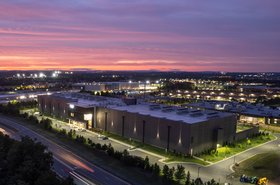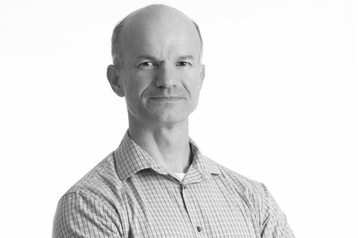In this installment of our DCD>Talks series, Kat Sullivan talks to John Sasser, chief technology officer at Sabey Data Centers, about the future of power in the data center industry. It’s a big topic and inevitably, attention quickly turns to the matter of sustainability.
Sabey is based in Ashburn, Virginia, one of the more densely populated data center markets, and that popularity has led to a strain on the power grid.
“It's well known that transmission capacity is constrained there – and we're in the market there, so we are affected by that. But it's not just Ashburn, it's a lot of different markets, especially where data centers have focused. The level of requirements that we're seeing these days is on such a scale that it's not easily supported by utilities, certainly not to the extent that it was in the past. Of course, sustainability is also a huge focus for us. Where do we not just get power, but emission-free power?”
He goes on to talk about the options for green energy that are either on the market or soon to become mature:
“There are a lot of different varieties, some that are much more established, such as gas turbines which have the benefit of being very energy-dense, so they don't require a large footprint. At the current time, they use natural gas which causes emissions – it's better than coal but still, you're emitting carbon and other elements. There are also fuel cells, which are not as established but certainly have been in place for a long time and are an option.
“I mentioned solar before, of course, but renewables, like solar and wind, are intermittent, and they require a lot of land. In the near term, as far as meeting our sustainability goals, we have a lot of interest in green hydrogen, and some of the incentives that are available in the United States.
“Right now there's not a supply of green hydrogen, so there's a supply and demand sort of thing going on. There are challenges associated with green hydrogen, not least of which are the economics. But it seems promising for 24/7 carbon-neutral generation. We are also looking at Small Modular Reactors (SMR), but we think they are further out.”
If this is the first time you’ve heard talk of nuclear-powered data centers, reign in your expectations – they are a long way off, according to Sasser:
“Permitting is going to be a challenge. Certainly, in the United States, the permitting process for new nuclear reactors is challenging and does increase the cost of those reactors. And then you have to be very careful with site selection. Some neighbors are going to be more accepting of nuclear reactors, but a lot of neighbors are not!
Site selection is always a challenge, especially where power is concerned. Sasser points out that the arrival of a new data center can be a double-edged sword for utilities:
“I think in a lot of cases data centers can be very good customers for utilities – we have a nice even load factor, so we use a lot of off-peak energy and utilities like that. But there is such a thing as too much of a good thing. I think that's what data center customers have become to utilities. In many cases, as opposed to being a customer that is welcomed through the door because of our characteristics, we're a customer that is very challenging for them.”
To find out more about John Sasser’s predictions for the future of power, and Sabey’s role in sustainability, listen to the full DCD>Talk here.
More from Sabey Data Centers
-

-

Sponsored Winning hearts and minds
-


